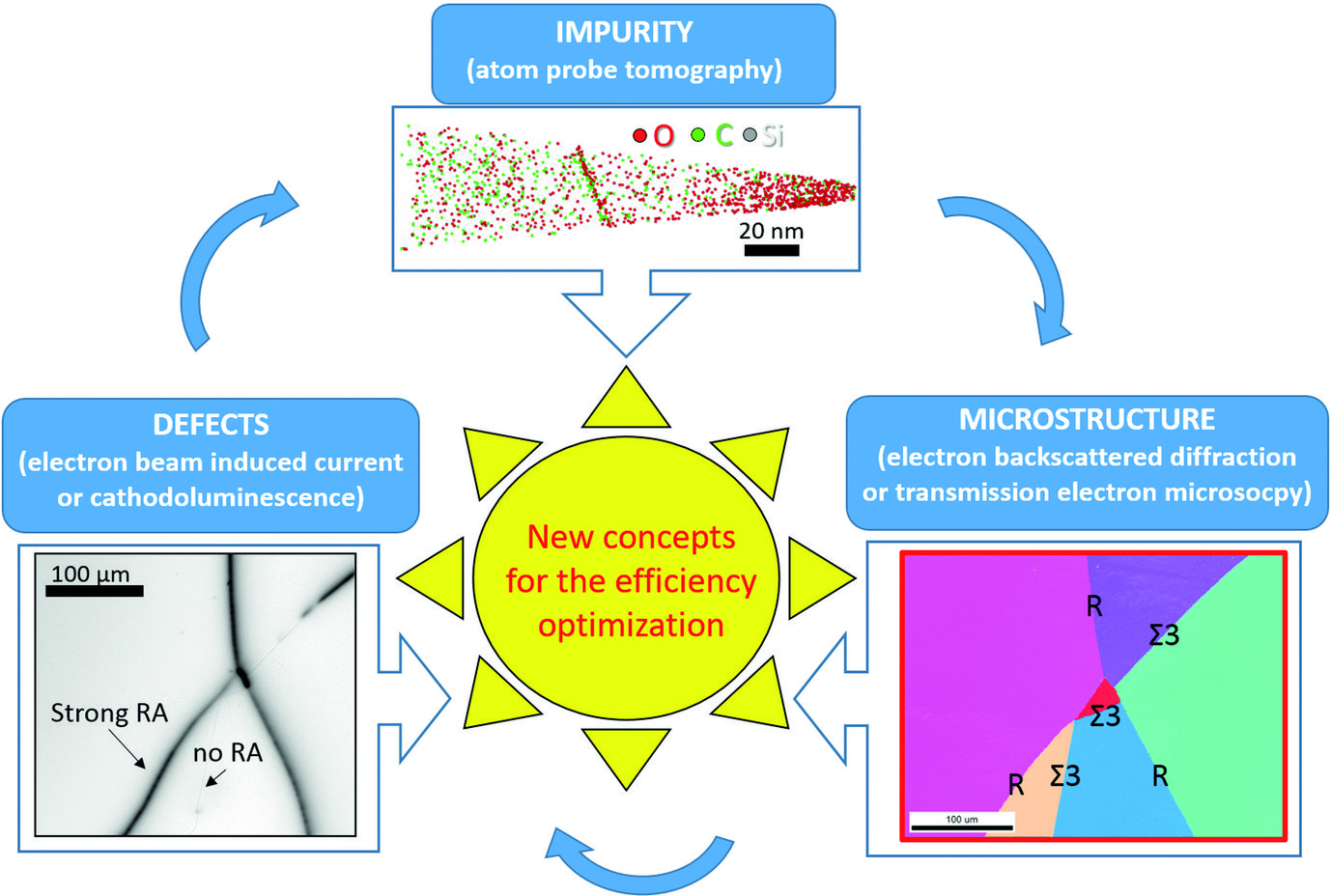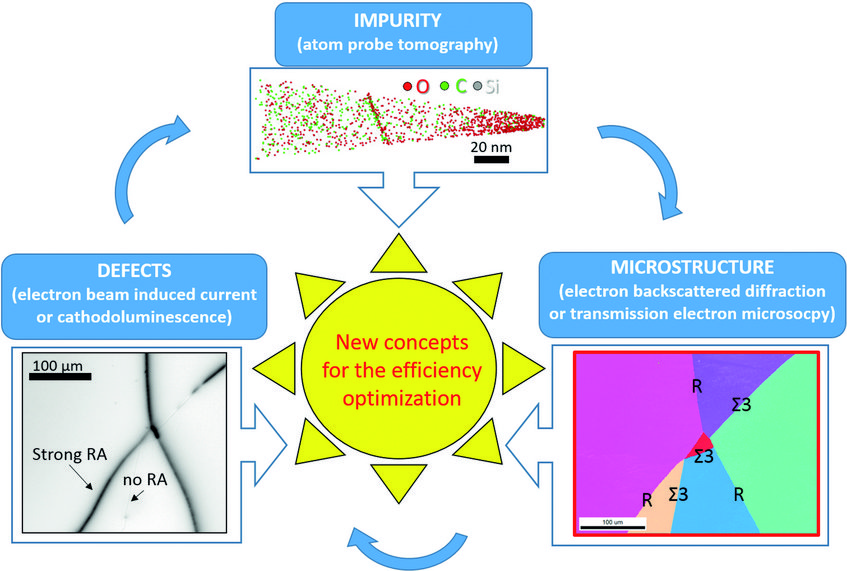Designing novel interfaces for better solar cells
In the last decade, designing new and better internal interfaces in such photovoltaic material becomes very crucial for controlling the quality of the cell. But to propose new development strategies, the mechanisms of the efficiency improvement at the atomic scale need to be first well understood. This can be done only by using advanced nanotechnology approaches, such as atom probe tomography, in order to track the atoms redistribution and their related phenomena (impurity segregation at grain boundaries or p-n Junction, clustering, diffusion).
Atom probe tomography is a very new technique, which was invented only couple of decades ago and therefore very attractive. The advantage of this powerful tool is that it shows both the structure and the composition of materials at atomic-scale. The resolution limit of this technique is 0.2 nm for the lateral resolution and 0.1 nm for the depth resolution, therefore it is considered as a high-resolution technique. The impurity level is as low as 20 ppm (0.002 at.%).

Research strategy: designing solar materials with higher efficiency can be done only by a full understanding of the correlation between impurity, defect and microstructure.
Therefore, the aim of Oana Cojocaru-Mirédin and her group “Interface Design in Solar Cells” is to perform chemical, structural, electrical, and optical characterization of the internal interfaces in solar cells by using nanotechnology approaches, such as atom probe tomography, in conjunction with complementary techniques (electron backscatter diffraction, transmission electron microscopy, cathodoluminescence, and electron beam-induced current).
The overarching goal is then to synthesize novel and improved multi-crystalline SI and Cu(In,Ga)Se2 or Cu2ZnSnSe4 thin-film solar cells in direct work with several institutes specialized on solar research.
Author: Oana Cojocaru-Mirédin
